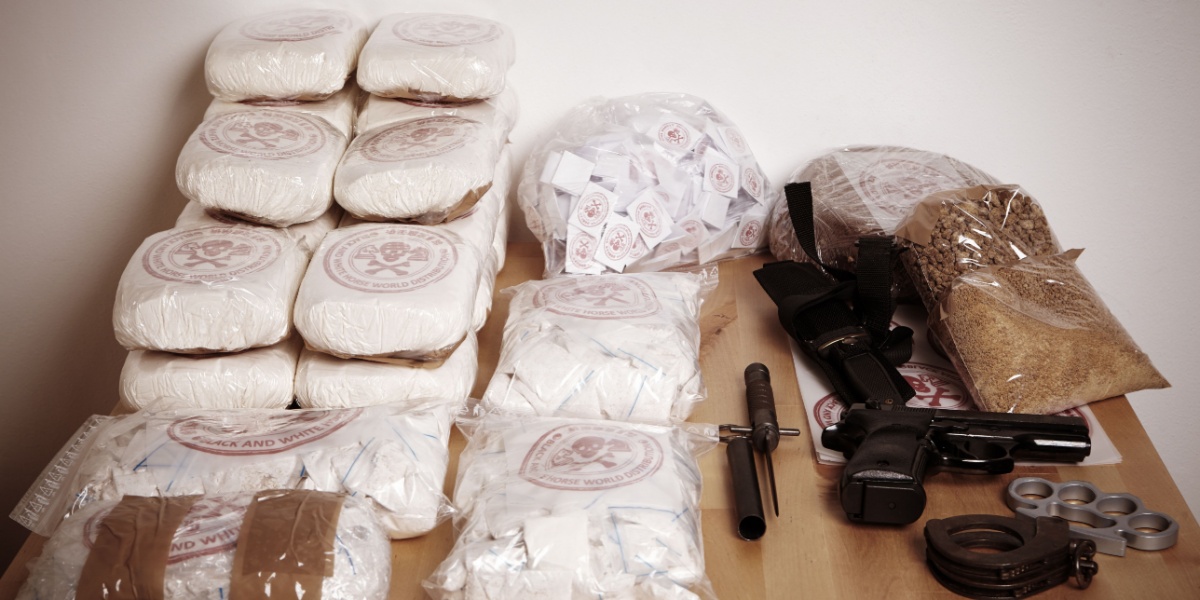The Controlled Substances Act is a legal system designed to categorize both illicit drugs and prescription medication into different tiers based on their medicinal use, potential for addiction and abuse, and likelihood to cause harm.
- The Controlled Substances Act regulates drug possession, manufacturing, and distribution through Drug Enforcement Administration (DEA) classifications and enforcement.
- Violating the Controlled Substances Act can result in fines, prison sentences, or other consequences, depending on the drug’s schedule and quantity, with Schedule I and II drugs typically carrying the highest legal penalties.
- The scheduling of a drug or substance can be updated—whether through addition, removal, or reclassification—by action from the Drug Enforcement Administration (DEA), the Department of Health and Human Services (HHS), or a petition filed by any interested party.

What is the Controlled Substances Act?
The Controlled Substances Act (CSA) is the law that regulates and classifies legal and illegal drugs in the USA. Drugs are categorized into different “schedules” according to accepted medical uses, the perceived danger they pose, and the potential for addiction or dependence.
In order to add, delete, or change the schedule of a drug or other substance, proceedings may be initiated by the Drug Enforcement Administration (DEA), the Department of Health and Human Services (HHS), or by petition from any interested party, including:
- The manufacturer of a drug
- A medical society or association
- A pharmacy association
- A public interest group concerned with drug abuse
- A state or local government agency
- An individual citizen
The CSA places allowances and restrictions on drugs about:
- Possession
- Manufacturing
- Importation
- Use
- Distribution
According to the DEA, each class has distinguishing properties, such as its potential for abuse, dependence, addiction, and accepted indication.
The CSA is primarily used to distinguish drug offenses in criminal proceedings and help physicians when prescribing medications.
Alcohol and nicotine products are not regulated under the CSA.
Schedules and drugs
The scheduling of a specific substance depends on its potency, addictive potential, medicinal use, and possible threat to a person’s physical and mental health. The DEA uses this 5 tiered scheduling system to classify drugs (both prescribed and illicit drugs): [1]
- Schedule I substances have a high potential for abuse and do not have federally recognized medical uses.
- Schedule II substances have a high potential for abuse; however, they have recognized medical uses.
- Schedule III substances have an accepted medical use, less potential for abuse, and a moderate to low potential for physical dependence.
- Schedule IV substances are used medicinally and have a lower risk of dependence compared to Schedule I-III substances.
- Schedule V substances are deemed to have a low potential for abuse and dependence.
Substances and drug schedules
| Drug Schedule | Drug Classification and Substances |
|---|---|
| Schedule I | |
| (Opioids) Heroin | |
| (Stimulants) MDMA | |
| (Hallucinogens) LSD, Psilocybin, Marijuana, Ibogaine, 2CB | |
| Schedule II | |
| (Stimulants) Amphetamines, Cocaine | |
| (Opioids) Fentanyl, Morphine, Codeine, Hydrocodone, Methadone | |
| Schedule III | |
| (Anabolic steroids) Testosterone | |
| (Hallucinogen or dissociative anesthetic) Ketamine | |
| (Opioids) Buprenorphine | |
| Schedule IV | |
| (Benzodiazepines) Alprazolam, Clonazepam, Diazepam | |
| (Sedative-hypnotics) Zolpidem, Eszopiclone | |
| Schedule V | |
| (Anticonvulsant) Pregabalin |
Penalties
There are legal penalties for making, possessing, using, or selling a controlled substance without the proper permission or authority. The penalties are determined by the schedule of the drug or other substance, with Schedule I and II drugs typically carrying the highest legal penalties. Higher penalties can also be incurred for possessing large quantities of a scheduled narcotic, especially if illegal sales are suspected.
On November 19, 1988, Congress passed the Anti-Drug Abuse Act of 1988. Two sections of this Act represent the U.S. Government’s attempt to reduce drug abuse by dealing not just with the person who sells the illegal drug, but also with the person who buys it. The first new section is titled “User Accountability,” and the second involves “personal use amounts” of illegal drugs.[1]
User accountability
The User Accountability section of the Anti-Drug Abuse Act was established to heighten awareness of the federal government’s position on drug abuse and to create programs to decrease drug abuse by holding users personally accountable for illicit drug practices. The penalties associated with User Accountability are issued in addition to criminal penalties and one does not replace the other.
User Accountability programs call for more instruction in schools to educate children on the dangers of drug abuse, for businesses that have links to the federal government to operate drug-free workplaces, and for public housing projects to evict tenants that use their domicile for drug abuse. In addition, anyone who has a prior conviction for illicit drug activity may be denied access to federal benefits such as housing assistance or student loans.[1]
Personal use amounts
This section of the Anti-Drug Abuse Act is intended to allow drug offenders caught with only a small amount of drugs (depending on the schedule type) to pay a fine instead of entering into a full criminal investigation. The intention of this is to reduce the amount of money spent by the government on criminal proceedings for minor drug offenses and to minimize offenders' interaction with the justice system. These civil fines for small personal use amounts can be up to $10,000. [1]
In some states and counties, having a small amount of an illicit drug (like marijuana) for ‘personal use’ is allowed, while other states penalize people for any possession of an illegal drug, no matter the quantity.
Related blog: Biden Pardons Thousands Convicted of Marijuana Possession
Final thoughts
The DEA scheduling system is designed to classify drugs that have the highest risk of abuse, addiction, and harm to an individual and society. Making, possessing, using, or selling a scheduled drug is illegal, and can result in severe penalties, fines, and even prison time. Understanding the Controlled Substance Act is important so that individuals can avoid legal penalties.


-guide-detail.jpg?v=1722501953)
-guide-detail.jpg?v=1722502007)